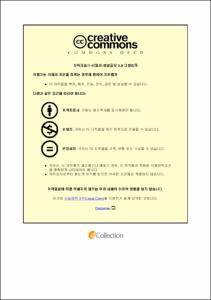Characterization of an advanced MEMS artificial basilar membrane using XeF2 etching in the air and fluid
- Title
- Characterization of an advanced MEMS artificial basilar membrane using XeF2 etching in the air and fluid
- Alternative Title
- 제논 에칭을 이용하여 제작된 개선된 MEMS 인공 기저막의 공기와 유체에서의 특성 평가.
- Author(s)
- Jeon, Hye Jin
- DGIST Authors
- Jeon, Hye Jin ; Choi, Hong Soo ; Choi, Ji Woong
- Advisor
- Choi, Hong Soo
- Co-Advisor(s)
- Choi, Ji Woong
- Issued Date
- 2016
- Awarded Date
- 2016. 2
- Type
- Thesis
- Subject
- artificial basilar membrane ; AlN beam array ; XeF2 etching ; MEMS ; resonance frequency ; piezoelectric output voltage ; 인공 기저막 ; AlN 빔 어레이 ; 제논 에칭 ; 공진 주파수 ; 압전 신호
- Abstract
-
Cochlear implants (CIs) are implanted electronic devices for hearing recover of patients who have profoundly hearing loss caused by damaged hair cells in the cochlea. Although CIs have been conventionally successful, it has some limitations: necessity of extracorporeal devices, exposure of a disability by extracorporeal devices, requirement of large power, frequent recharging, and complicated signal processing circuits. To overcome these limitations, many researchers proposed the artificial basilar membranes (ABMs) to develop fully implantable CIs using microelectromechanical system (MEMS) technology. The ABM mimics the function of cochlea such as frequency selectivity and acoustic to electrical energy conversion. In the previous studies of our group, Kim et al. developed an ABM consisting of an aluminum nitride (AlN) beam array with narrow supports. However, the piezoelectric voltage output was noise level because the narrow supports lead to a rigid body motion of beams. To increase the piezoelectric output of an ABM, Jang et al. proposed an ABM fabricated by using a silicon-on-insulator (SOI) wafer and deep reactive ion etching (DRIE). Although the Jang et al.’s ABM showed the enhanced piezoelectric output performance, their fabrication process was too complicated with relatively high production cost.
In this paper, we fabricated an advanced MEMS ABM based on XeF2 etching technology. The XeF2 etching enable the total fabrication process to very simple with relatively low production costs in comparison with DRIE. Also, the low-pressure chemical vapor deposition silicon nitride (LPCVD Si3N4) was used to reduce the lateral bending of beam which was caused by residual stress. In addition to fabrication process, the all beams of ABM were designed to continuous beam structure without narrow supports to avoid rigid body motion of beam.
The displacement and piezoelectric output of each beam were measured using a scanning laser-Doppler vibrometer (SLDV) for acoustic or electric stimulus. During acoustic stimulus, the fabricated ABM showed a frequency selectivity in the range 10.5 - 36.5 kHz and the piezoelectric voltage output in the range 2 - 5 µV. It also showed a frequency selectivity in the range 11.1 - 47.7 kHz for electric stimulus. Also, the frequency selectivity of the fabricated ABM was estimated in the fluid. Since the viscous-damping effect of water, the resonance frequency was shifted from 11.1 - 47.7 kHz in air to 3.1 - 11.9 kHz in fluid.
From these results, the fabricated ABM has the two functions of cochlea which are frequency selectivity and acoustic-to-electric energy conversion. Also, we identified the feasibility as substitute of the conventional CIs and the potential as fully implantable device. ⓒ 2016 DGIST
- Table Of Contents
-
1. INTRODUCTION 8 --
1.1 Background 8 --
1.1.1 Human ear anatomy and cochlea mechanism 8 --
1.1.2 Cochlear implants 11 --
1.2 Numerous studies to mimic the functions of cochlea 14 --
1.3 Objective of this research 17 --
2. DESIGN AND FABRICATIONS 18 --
2.1 Design of the advanced ABM 18 --
2.1.1 Theoretical calculation of the ABM 18 --
2.1.2 The advanced design of the ABM for removing narrow supports 22 --
2.2 Fabrication of the advanced ABM 23 --
2.2.1 The 1st fabrication process 23 --
2.2.2 The 2nd fabrication process 31 --
3. EXPEREIMENT SETUP 36 --
3.1 Measurement setup using SLDV 36 --
3.2 Measurement setup in fluid 41 --
4. Measurement results and discussions 43 --
4.1 Performance characteristics of the ABM in air 43 --
4.1.1 Mechanical responses of the ABM 43 --
4.1.2 Piezoelectric responses of the ABM 48 --
4.2 Performance characteristics of the ABM in fluid 52 --
4.2.1 Mechanical responses of the ABM 52 --
4.2.2 Piezoelectric responses of the ABM 57 --
4.3 Discussions 59 --
5. CONCLUSIONS 61 --
REFERENCES 63
- URI
-
http://dgist.dcollection.net/jsp/common/DcLoOrgPer.jsp?sItemId=000002229784
http://hdl.handle.net/20.500.11750/1464
- Degree
- Master
- Department
- Robotics Engineering
- Publisher
- DGIST
- Related Researcher
-
-
Choi, Hongsoo
- Research Interests Micro/Nano robot; Neural prostheses; MEMS; BMI; MEMS/NEMS; BioMEMS; MEMS 초음파 트랜스듀스; 인공와우
-
- Files in This Item:
-
 기타 데이터 / 3.91 MB / Adobe PDF
download
기타 데이터 / 3.91 MB / Adobe PDF
download
- Appears in Collections:
- Department of Robotics and Mechatronics Engineering Theses Master



